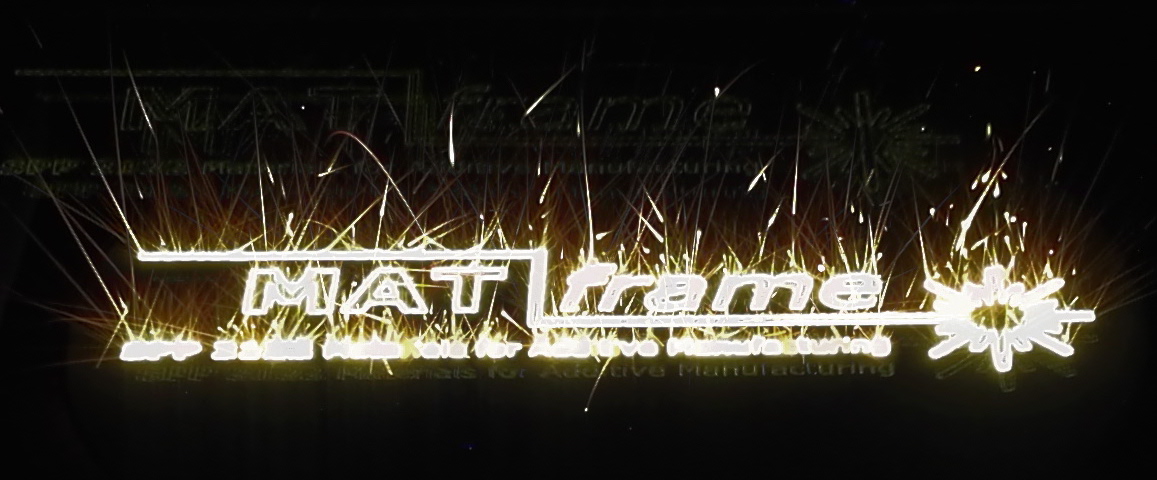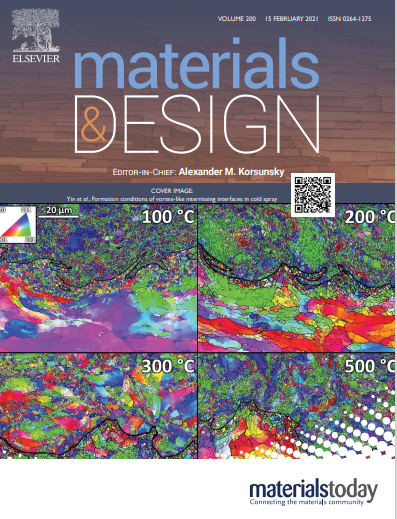SPP 2122 Materials for Additive Manufacturing
Advanced Engineering Materials Special Issue
Five years of cutting-edge research on "Materials for Additive Manufacturing" - now in black and white:
In the Special Issue of Advanced Engineering Materials, 30 articles show how we have made metals and polymers fit for 3D printing.
https://advanced.onlinelibrary.wiley.com/toc/15272648/2025/27/14
Highlight Interlaboratory Study (ILS)
Highlight: Our Interlaboratory Study (ILS) - over 30 institutions, over 1.2 million correlations, a unique data set for the Laser Powder Bed Fusion process.

Lasers in production processes, including additive manufacturing, are becoming more and more powerful, but the materials powders available are often inadequate for today’s laser processing tasks. [1] In additive manufacturing there has been multiple efforts regarding the adaptation of process parameters, but metal powders are used which were developed for thermal spraying, a completely different kind of process. In modern laser-based additive manufacturing, these powders lead to process instabilities as well as porosities and defects in the resulting components. In the field of polymer powders, there is also a lack of operational availability of a sufficiently wide range of processable materials and a limitation in the final components’ property profiles compared to conventional processing routes. Fundamental research focussing on the powder materials synthesis and engineering for laser-based additive manufacturing to shape the process chain right from the start is needed, i.e. powder materials development.
This Priority Programme’s main objective is the synthesis of new metal and polymer powders for efficient laser-based 3D additive manufacturing by means of formulations, additivations and (chemical) modifications of both, new and commercial powders. By this, the range of powder materials accessible for laser-based additive manufacturing shall be enhanced significantly. Improving the processability includes requirements like efficient, low cycling time, highly reproducible and precise laser-based additive manufacturing processes. Hence, a recursive research, where the knowledge on materials behaviour during laser-based additive manufacturing is used as input for improved materials design, and vice versa, is preferred. A deepened, preferably predictive, understanding of the materials behaviour during laser-based additive manufacturing by means of suitable analytical and theoretical examination methods is desired.
The Priority Programme aims to bring together materials scientists and photonics researchers. To this end, an interdisciplinary and transregional cooperation between the two fields of “materials” and “laser-based additive manufacturing” in the form of tandem projects is highly intended. Furthermore, specific links across the project boundaries are envisaged also to foster the discovery of concepts bridging the two materials classes of polymers and metals. In this context, the following topical areas, addressing common questions, will be the focus of the priority programme:
- Synthesis and matrix formulation: How shall process parameters and materials properties be adapted to the laser-based additive manufacturing process via matrix modification (e.g. alloying, doping, compounding) of powders?
- Particle surface formulation and additivation: How shall target properties like flowability, wetting, porosity or (heterogeneous) nucleation be adapted to the laser-based additive manufacturing process via surface modification of powders?
- In-situ measurements and process dynamics: How may calorimetry, high-speed videography, pyrometry and online spectroscopy as well as modelling contribute to understand the melting and recrystallisation dynamics as well as the lateral distribution of the thermal process window?
[1]Gökce, B.; Barcikowski, S.; Behrens, P.; Fritsching, U.; Kelbassa, I.; Poprawe, R.; Esen, C.; Ostendorf, A.; Voit, B.: Prozessadaptierte Materialien für die Photonik. In: Photonik 1 (2015), S. 24-28 Photonik
Recent overview publications from the SPP:
[1] Kusoglu, I. M.; Donate-Buendia, C.; Barcikowski, S.; Gökce, B.: Laser Powder Bed Fusion of Polymers: Quantitive Research Direction Indices. In: Materials 14, 5(2021), S. 1169 Materials
[2] Donate-Buendia, C.; Gu, D.; Schmidt, M.; Barcikowski, S.; Korsunsky, A. M.; Gökce, B.: On the selection and design of powder materials for laser additive manufacturing. In: Materials & Design 204 (2021), S. 109653 Materials and Design
[3] Kusoglu, I. M., Gökce, B., Barcikowski, S.: Research trends in laser powder bed fusion of Al alloys within the last decade. In: Additive Manufacturing 36 (2021), S. 101489 Additive Manufacturing
The DFG call for this priority programme can be found here: SPP 2122





